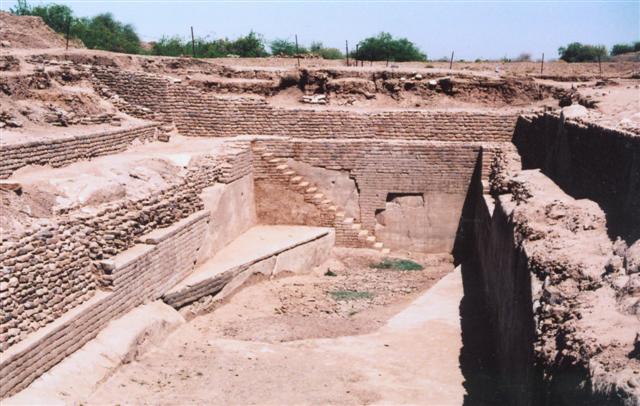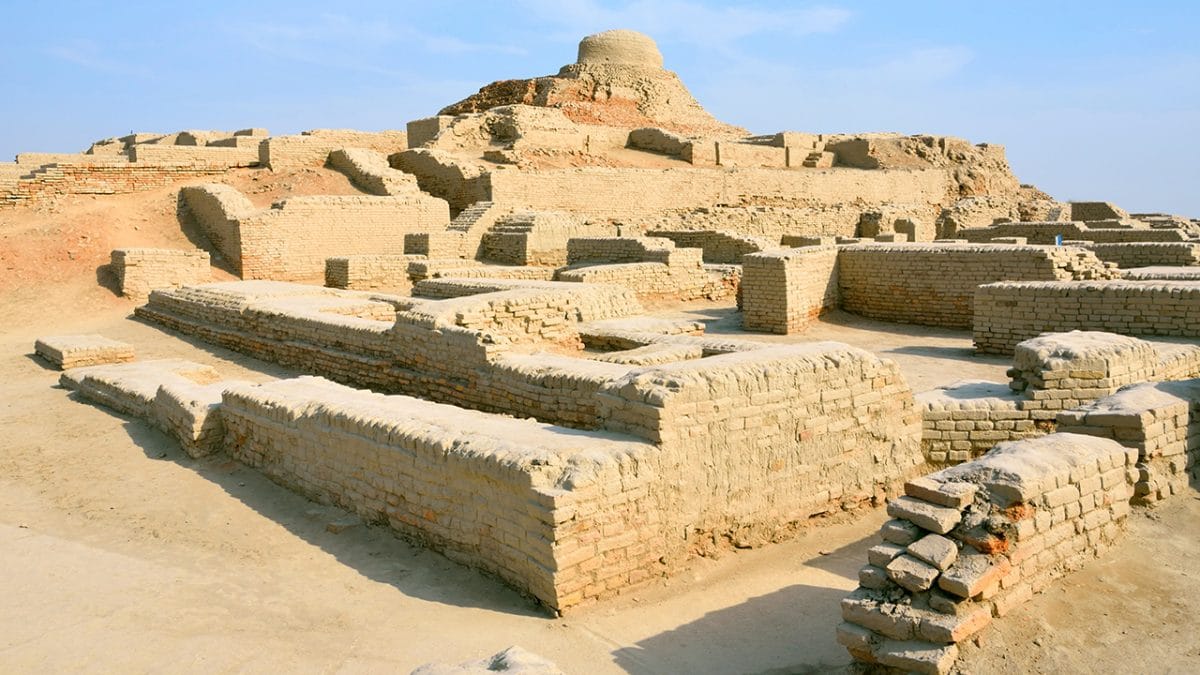
At its peak, the civilization had a population of more than five million people. Their baked brick houses and clusters of large and nonresidential buildings is amazing.

The location of the Indus Valley Civilization is located in what is now Pakistan and northwest India. They remained on the fertile food plain of the Indus River and its vicinity.
There were two big cities in the Indus Valley Civilization, the Mohenjo-Daro on the lower Indus, and Harappa, further upstream. Both these cities had a highly developed city life. There were many houses with wells and bathrooms. They also had an elaborated underground drainage system.
Some compare the social conditions of the citizens to those in Sumeria and superior to contemporary Babylonians and Egyptians. The Indus Valley Civilization displayed a well-planned urbanization system.
There is evidence of contact between the Indus and the Near East, including commercial, religious, and artistic connection. These are all recorded in Sumerian documents. In these documents, the Indus valley people are referred to as “Meluhhaites”, while the name of the valley is Meluhha.
The Indus Civilization had a writing system which remains a mystery to this day. All attempts to decipher it have failed. This is the main reason why the civilization is one of the least known of the important early civilizations. Examples of their writing system are found in poetry, carved stamp seals, and even copper tablets.

There is no clear evidence of the nature of the relationship between cities in the valley. Some suggest they were independent city-states. Others claim they were part of a larger kingdom.
By 1800 BCE, the civilization began to decline. Writing started to disappear and the connection to the Near East was interrupted. Some cities got abandoned. There is no clear reason for the decline. It remains a mystery to this day.
Some believe the main reason is the drying up of the Saraswati River. This process began around 1900 BCE. Other historians speak of a great flood in the area.
Around 1500 BCE, a large group of nomadic cattle-herders, the Aryans, migrated into the region. They came from central Asia. This large migration was seen as an invasion.
With all the factors above, the Indus Valley Civilization came to an end. Over the course of several centuries, the Aryans gradually settled down and took up agriculture. And their language gained supremacy over the local languages.
Mohenjo-Daro is one of the earliest major cities in the world. Founded in 2500 BC, it is one of the largest cities in the Indus Valley Civilization. It is contemporaneous with the cities and civilizations of Mesopotamia, Egypt, and Norte Chico.
The city’s original name remains a mystery. Based on some analysis, the ancient name could have been Kukkutarma. Cock-fighting had ritual and religious significance for the city. Domestic chickens were bred for sacred purposes, not as a food source. Some experts believe the city have been a point of diffusion for the eventual domestication of chickens.

It was the most advanced city of its time. Mohenjo-Daro had a remarkably sophisticated civil engineering and urban planning system.
By 2600 BCE, cities in the Indus Valley developed into large urban centers. In total, there were more than 1,052 cities and settlements in the area.
The bricks in the cities are uniform in size and gray-brown in color. They are in a field of dead grass and bordered by low-lying green trees.
Harappa was the most fortified city in the valley. Estimates are there were more than 23,000 residents in the city living in sculpted houses with flat roofs made of red sand and clay. Harappa spreads over 150 hectares and had fortified administrative and religious centers.
Harappa and Mohenjo-daro featured citadels, central areas in a city heavily fortified and protected with defensive military structures. Situated along the Indus River, this allowed those at higher levels of the buildings to look down the river and see into the distance.
Residents demonstrated advanced architecture with granaries, warehouses, brick platforms, dockyards, and protective walls.
Unlike people from Mesopotamia and Egypt, the residents of Indus Valley did not build large and monumental structures. There are no temples and palaces. Granaries, a storehouse for grain, was the largest structure.

The history of the Forbidden City begins with a bloody coup at the beginning of the 15th century when the ambitious field commander Prince Zhu Di took power.As the Yongle Emperor, ...
Do you want to know more about the big cities of the ancient world? This documentary takes us to the very heart of urban life in the Mediterranean area, the hub of the ancient worl...
Pompeii is a vast archaeological site in southern Italy’s Campania region, near the coast of the Bay of Naples. Once a thriving and sophisticated Roman city, Pompeii was buried u...
This documentary vividly brings to life the rise and fall of the Roman Empire through the lens of one of the most exhilarating and brutal arenas in the history of humanity–the Co...